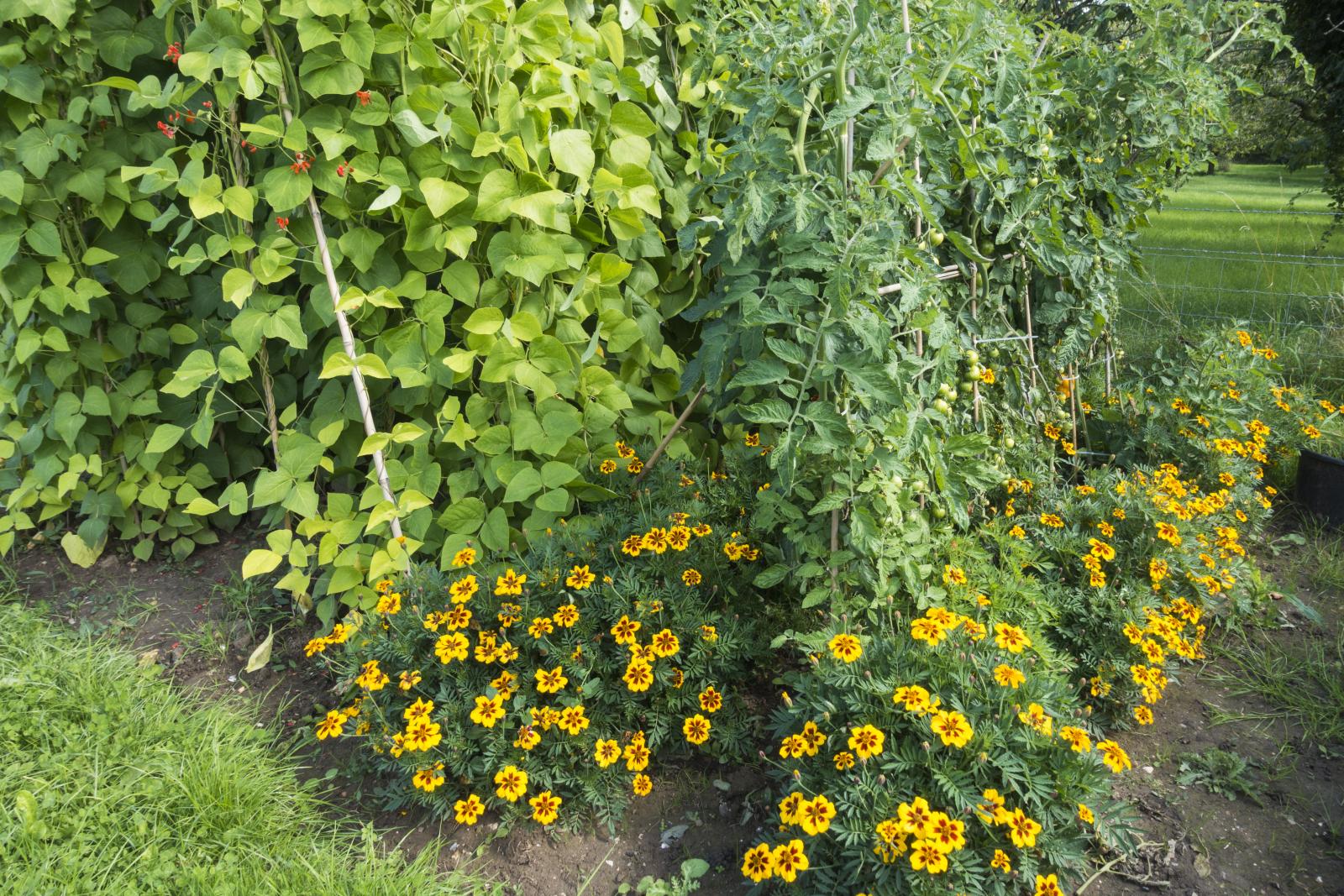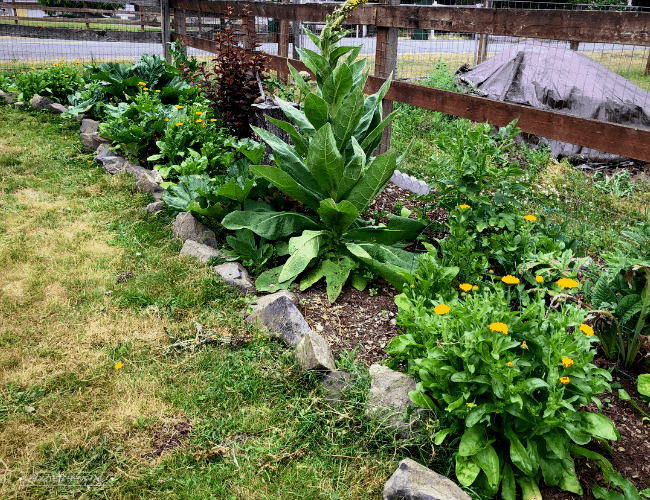Companion Plants That Will Make Your Calendula Thrive
Companion Planting That Will Make Your Calendula Thrive
Calendula is a beautiful and versatile flower that can be grown in a variety of settings. It's also a great companion plant for other vegetables and flowers, as it can offer a number of benefits.
In this blog post, we'll discuss some of the best companion plants for calendula, and how they can help your plants thrive. We'll also cover some of the reasons why companion planting is beneficial, and how to choose the right companion plants for your garden.
Why Companion Planting is Beneficial
Companion planting is the practice of planting certain plants together to enhance each other's growth and productivity. There are a number of reasons why companion planting is beneficial, including:
- Attracting beneficial insects. Many companion plants attract beneficial insects, such as ladybugs, lacewings, and hoverflies. These insects help to control pests that can damage your plants.
- Reducing pests and diseases. Some companion plants release chemicals that repel pests or inhibit the growth of diseases. For example, calendula is known to repel nematodes, which are microscopic worms that can damage roots.
- Improving soil quality. Certain companion plants can help to improve the soil quality in your garden. For example, legumes, such as peas and beans, fix nitrogen in the soil, which can provide nutrients for other plants.
- Providing shade and windbreaks. Some companion plants can provide shade or windbreaks for other plants. This can help to protect them from pests and diseases, and can also help to conserve water.
Choosing Companion Plants for Calendula
Calendula is a relatively easy-to-grow plant that can be paired with a variety of other plants. Some of the best companion plants for calendula include:
- Asparagus. Asparagus is a heavy feeder, and its roots release nutrients into the soil that can benefit calendula.
- Beans. Beans fix nitrogen in the soil, which can help to improve the growth of calendula.
- Broccoli. Broccoli is a relatively weak-growing plant, and calendula can help to protect it from pests and diseases.
- Carrots. Calendula can help to repel carrot flies, which are a common pest of carrots.
- Cucumbers. Calendula can help to repel cucumber beetles, which are another common pest of cucumbers.
- Peas. Peas fix nitrogen in the soil, which can help to improve the growth of calendula.
- Potatoes. Calendula can help to repel potato beetles, which are a common pest of potatoes.
- Roses. Calendula can help to repel aphids, which are a common pest of roses.
- Squash. Calendula can help to repel squash bugs, which are a common pest of squash.
When to Plant Companion Plants
The best time to plant companion plants is when you are planting your main crop. This will give the companion plants time to establish themselves before the main crop starts to grow.
How to Plant Companion Plants
When planting companion plants, it is important to space them correctly. The exact spacing will depend on the size of the plants, but in general, you should space companion plants about 12 inches apart.
You can plant companion plants directly in the ground or in containers. If you are planting in containers, make sure that the containers are large enough for the plants to grow.
Conclusion
Companion planting is a great way to improve the growth and productivity of your garden. By planting calendula with the right companion plants, you can help to attract beneficial insects, repel pests and diseases, and improve soil quality.
If you are new to companion planting, start by pairing calendula with a few of the plants listed above. With a little planning, you can create a beautiful and productive garden that is full of healthy plants.
Calendula, also known as pot marigold, is a beautiful and beneficial flower that can be grown in many different types of gardens. It is a great companion plant for a variety of vegetables and flowers, and it can help to repel pests and attract pollinators.
If you are looking for more information about calendula companion plants, I recommend visiting Gardenia Inspiration. This website has a wealth of information on the topic, including a list of the best plants to grow with calendula, as well as tips on how to plant and care for these plants.
In addition to providing information on companion planting, Gardenia Inspiration also has a blog with articles on a variety of gardening topics. Whether you are a beginner or an experienced gardener, you are sure to find something useful on this website.
FAQ of calendula companion plants
Question 1: What are the 5 most frequently asked questions about calendula companion plants?
Answer:
The 5 most frequently asked questions about calendula companion plants are:
- What is calendula a good companion plant for?
- What are the benefits of companion planting with calendula?
- What are some common companion plants for calendula?
- How far apart should calendula plants be planted?
- How do you care for calendula companion plants?
Question 2: What is calendula a good companion plant for?
Answer:
Calendula is a good companion plant for many other vegetables and flowers. Some of its best companion plants include:
- Asparagus: Calendula can help to repel asparagus beetles.
- Beans: Calendula can help to attract aphids away from beans.
- Broccoli: Calendula can help to deter cabbage moths.
- Brussels sprouts: Calendula can help to repel pests such as aphids and whiteflies.
- Carrots: Calendula can help to attract beneficial insects such as ladybugs and hoverflies.
- Cucumbers: Calendula can help to repel cucumber beetles.
- Potatoes: Calendula can help to repel potato beetles.
- Pumpkins: Calendula can help to attract pollinators such as bees and butterflies.
- Tomatoes: Calendula can help to deter pests such as tomato hornworms and whiteflies.
Question 3: What are the benefits of companion planting with calendula?
Answer:
There are many benefits to companion planting with calendula. Some of these benefits include:
- Disease and pest control: Calendula can help to repel a variety of pests, including aphids, whiteflies, beetles, and moths. It can also help to deter diseases such as powdery mildew and black spot.
- Attracting pollinators: Calendula is a flowering plant that attracts pollinators such as bees and butterflies. These pollinators help to pollinate other plants in the garden, which can lead to a better harvest.
- Improving soil quality: Calendula is a nitrogen-fixing plant, which means that it can help to improve the nitrogen content of the soil. This can benefit other plants in the garden that require nitrogen.
- Disguising the scent of other plants: Calendula has a strong scent that can help to disguise the scent of other plants that are attractive to pests. This can help to protect those plants from being eaten.
- Adding beauty to the garden: Calendula is a beautiful flower that can add color and interest to any garden. It can also be used to make potpourri or dried flower arrangements.
Question 4: What are some common companion plants for calendula?
Answer:
In addition to the plants listed in the answer to question 2, some other common companion plants for calendula include:
- Basil: Basil can help to repel mosquitoes and other insects.
- Cilantro: Cilantro can help to repel aphids and other pests.
- Dill: Dill can help to attract pollinators such as bees and butterflies.
- Marigolds: Marigolds are another type of flowering plant that can help to repel pests.
- Onions: Onions can help to repel nematodes.
- Peas: Peas can help to fix nitrogen in the soil.
- Rosemary: Rosemary can help to repel pests such as aphids and whiteflies.
- Sage: Sage can help to repel mosquitoes and other insects.
- Thyme: Thyme can help to attract pollinators such as bees and butterflies.
Question 5: How far apart should calendula plants be planted?
Answer:
Calendula plants should be planted about 6-12 inches apart. This will give them enough space to grow and spread. If you are planting calendula in rows, allow about 18-24 inches between rows.
Image of calendula companion plants
- Calendula and beans. Calendula can lure aphids away from beans, making it a great companion plant for these vegetables.

- Calendula and broccoli. Calendula can help to repel pests from broccoli, such as cabbage moths and aphids.

- Calendula and carrots. Calendula can help to deter carrot flies from carrots.

- Calendula and cucumbers. Calendula can help to repel cucumber beetles from cucumbers.

- Calendula and tomatoes. Calendula can help to attract beneficial insects to tomatoes, such as ladybugs and lacewings.

Post a Comment for " Companion Plants That Will Make Your Calendula Thrive"